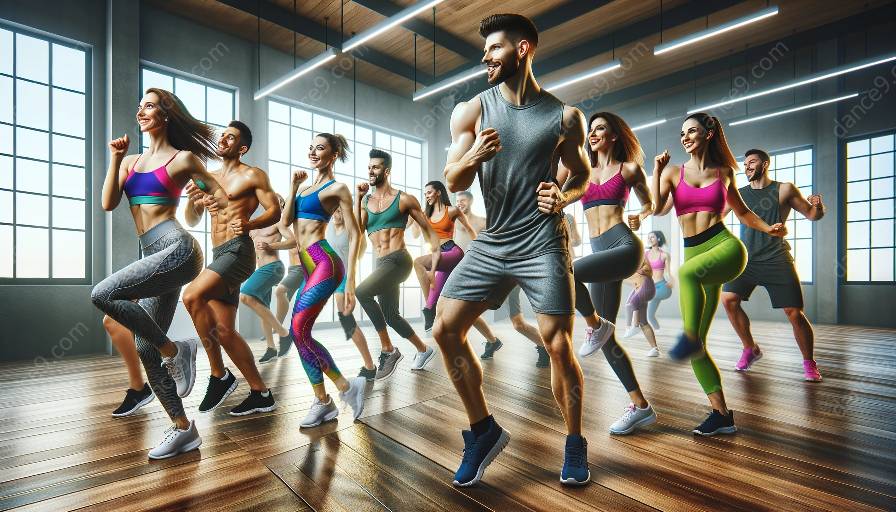Dance classes are an excellent way to improve fitness and strength while having fun and expressing yourself. By incorporating fitness and strength training into dance classes, individuals can enhance their overall physical health and performance. This article explores the benefits of combining fitness and strength training with dance, providing insights and tips for achieving success in both areas.
The Benefits of Fitness Dance
Fitness dance combines the elements of dance and fitness to provide a comprehensive workout that promotes cardiovascular health, muscular endurance, and flexibility. By participating in fitness dance classes, individuals can enjoy an engaging and dynamic form of exercise that helps improve coordination, balance, and overall body conditioning.
Additionally, fitness dance classes often incorporate different dance styles, such as Zumba, hip-hop, or salsa, allowing participants to explore various movement patterns and cultural influences while getting their heart rates up. This diversity not only makes the workout more enjoyable but also encourages individuals to step out of their comfort zones and expand their dance repertoire.
Enhancing Strength Through Dance
Strength training in dance classes complements fitness dance by targeting specific muscle groups and enhancing overall physical strength. Many dance styles, including ballet, contemporary, and jazz, require dancers to develop muscular strength and endurance to execute movements with precision and control.
Incorporating strength training exercises, such as bodyweight resistance, resistance bands, or light weights, into dance classes can help dancers improve their ability to perform challenging choreography, maintain proper alignment, and reduce the risk of injury. Furthermore, building strength through dance can contribute to improved posture, core stability, and muscle tone, enhancing both the aesthetic and functional aspects of the body.
The Fusion of Fitness and Dance
When fitness and strength training are integrated into dance classes, individuals can reap the combined benefits of improved cardiovascular fitness, muscular strength, and flexibility while refining their dance techniques and artistry. This fusion creates a well-rounded approach to physical conditioning that caters to individuals looking to enhance their performance in dance and maintain overall fitness.
Moreover, the fusion of fitness and dance encourages participants to develop a deeper understanding of body mechanics, alignment, and movement control, leading to greater body awareness and mastery of dance techniques. As a result, dancers can experience heightened confidence, improved stamina, and a heightened sense of body connectivity and expression.
Practical Tips for Integrating Fitness and Strength Training
For dance instructors and fitness enthusiasts looking to incorporate fitness and strength training into dance classes, several practical tips can help ensure a successful integration:
- Customized Program Design: Tailor fitness and strength training programs to align with the specific needs and goals of the dance class participants. Consider incorporating elements of cardiovascular conditioning, resistance training, and flexibility enhancement to create a well-balanced workout regimen.
- Progressive Approach: Gradually introduce fitness and strength training exercises, allowing participants to build their capabilities and adapt to new challenges over time. Progression should be guided by individual skill levels and the demands of the dance repertoire.
- Functional Movement Integration: Focus on integrating functional movements that directly translate to dance techniques, emphasizing stability, power, and mobility to support the physical demands of various dance styles.
- Embrace Diversity: Explore a broad range of fitness and strength training modalities to cater to the diverse needs and preferences of dance class participants. Encourage variety and exploration to promote continuous engagement and adaptation.
- Rest and Recovery: Recognize the importance of adequate rest and recovery periods to prevent overtraining and support muscle repair and adaptation. Design dance classes that incorporate restorative practices and active recovery to optimize performance and reduce the risk of overuse injuries.
Conclusion
Fitness and strength training play crucial roles in enhancing performance and overall well-being in dance classes. By embracing the fusion of fitness and dance, individuals can enjoy a multifaceted approach to physical conditioning that celebrates the artistry and athleticism of dance. Whether you are a dance enthusiast looking to elevate your skills or a fitness professional seeking to expand your offerings, integrating fitness and strength training into dance classes can lead to a more comprehensive and fulfilling experience for participants. Embrace the synergy of dance and fitness to unleash your potential and achieve holistic growth in both body and mind.













































































